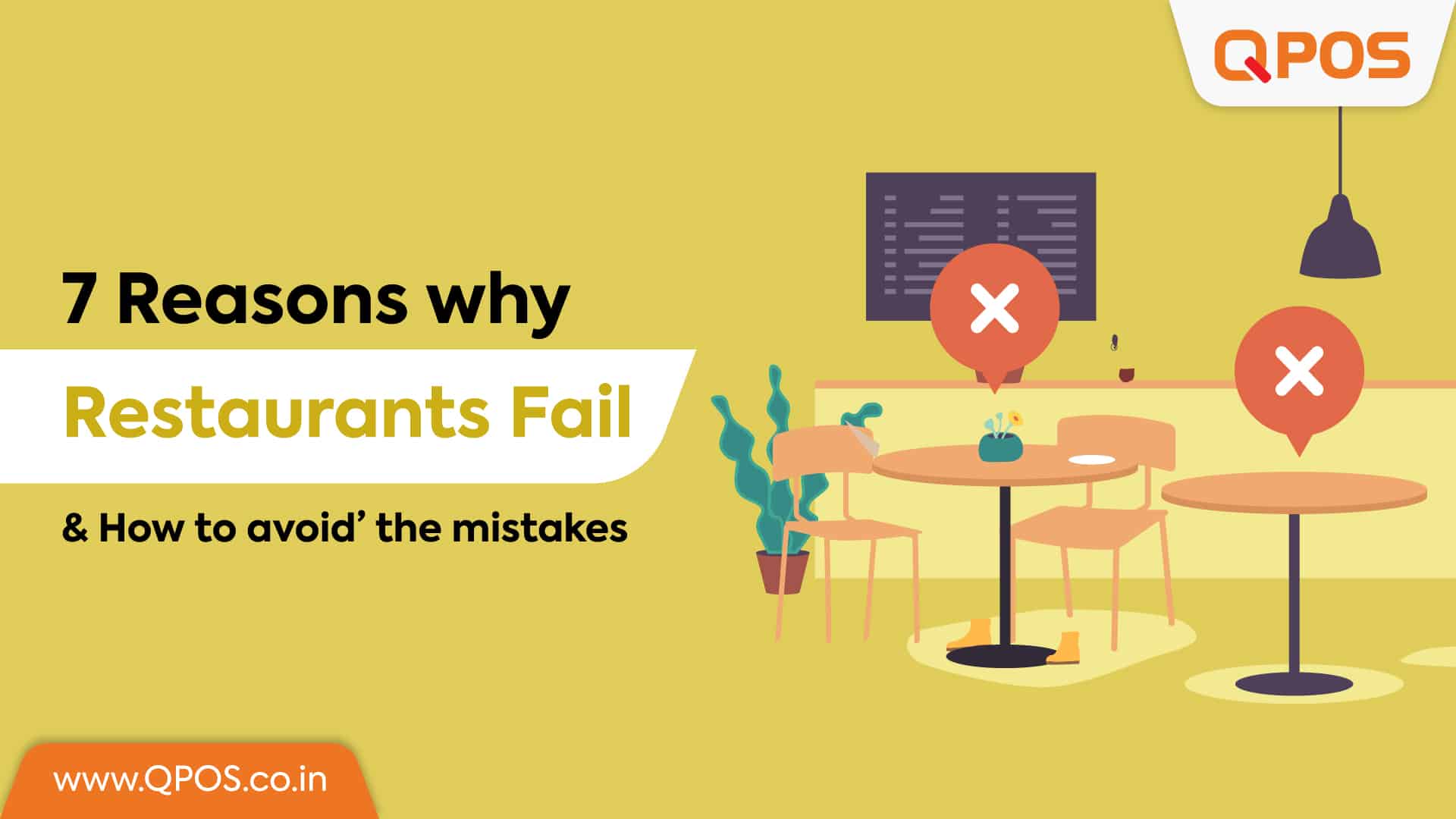7 Reasons Why Restaurants Fail & How to Avoid the Mistakes
Running a restaurant is a challenging venture, and the statistics are shocking. According to the National Restaurant Association, about 60% of new restaurants close within their first year of operation, and nearly 80% don’t make it past five years. The restaurant industry is known for its high failure rate, but with careful planning and a proactive approach, you can increase your chances of success.
Now we’ll explore seven common reasons why restaurants fail and offer some guidance on how to avoid these pitfalls.
Poor Location Selection:
Choosing the right spot can make or break your business.
Problem: Restaurants in areas with low foot traffic, limited parking, or insufficient visibility are at a significant disadvantage.
Solution: Conduct thorough market research and choose a location that aligns with your target audience. Consider factors like demographics, competition, and accessibility.
Inadequate Business Planning:
Starting a restaurant without a solid business plan is a recipe for disaster.
Problem: Many failed restaurants lack a clear vision, mission, and financial strategy.
Solution: Create a comprehensive business plan that outlines your concept, menu, target market, marketing strategy, budget, and revenue projections. Regularly review and adjust your plan as needed to adapt to changing circumstances.
Weak Financial Management:
Financial mismanagement is a common cause of restaurant failure.
Problem: Overextending your budget, not keeping track of expenses, and underestimating costs can lead to cash flow problems and debt.
Solution: stablish a robust financial system, monitor costs diligently, and prepare for unexpected expenses.
Lack of Marketing and Promotion:
Even with a great menu and service, a restaurant can fail if it doesn’t invest in marketing and promotion.
Problem: Many restaurants underestimate the importance of building a brand and attracting customers.
Solution: Create a marketing plan that includes online and offline strategies, social media presence, and customer engagement. Consistently promote your restaurant to build a loyal customer base.
Inconsistent Quality and Service:
Inconsistency in food quality and service can quickly drive customers away.
Problem: Whether it’s a fantastic meal one day and a disappointing one the next or inconsistent service standards, your restaurant’s reputation can suffer.
Solution: Implement strict quality control measures and train your staff to maintain high service standards consistently.
Neglecting Customer Feedback:
Ignoring customer feedback can be a costly mistake.
Problem: Unhappy customers may not return and can dissuade others from visiting.
Solution: Make sure to encourage feedback and use it as an opportunity to improve. Respond to reviews and comments online and consider implementing changes based on customer suggestions.
Failure to Adapt:
The restaurant industry is constantly evolving.
Problem: Failing to adapt to changing trends and customer preferences is a significant reason why restaurants fail.
Solution: Stay updated with industry trends, experiment with your menu, and be flexible in your approach. Regularly assess your business model and make necessary adjustments to remain competitive.
Running a successful restaurant is a challenging but rewarding endeavour. By avoiding these common pitfalls and proactively addressing potential issues, you can increase your chances of achieving long-term success. Remember that a well-planned business strategy, strong financial management, consistent quality, and an adaptive mindset are key to overcoming the odds and thriving in the competitive world of restaurants.
With QPOS, restaurant owners can gain better control over their operations, reduce errors, and enhance customer satisfaction. As the restaurant industry continues to evolve, embracing innovative technology like QPOS can be a vital step towards staying competitive, growing the business, and ultimately achieving long-term success in a dynamic and demanding environment.





